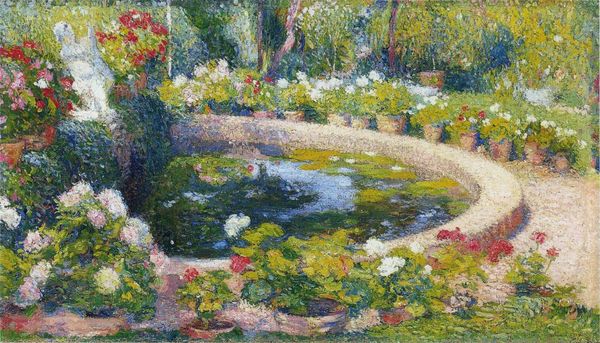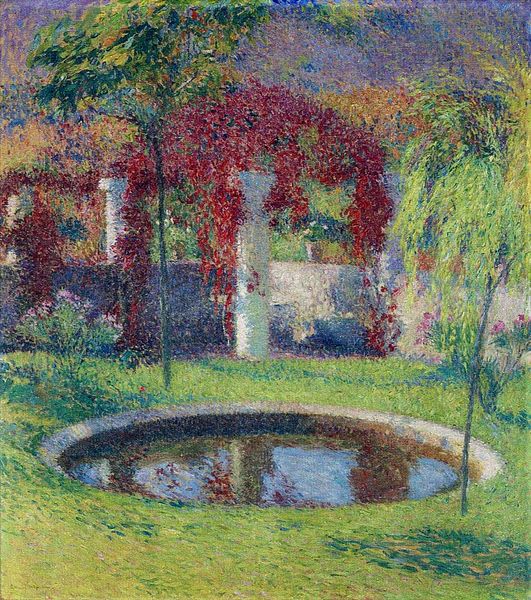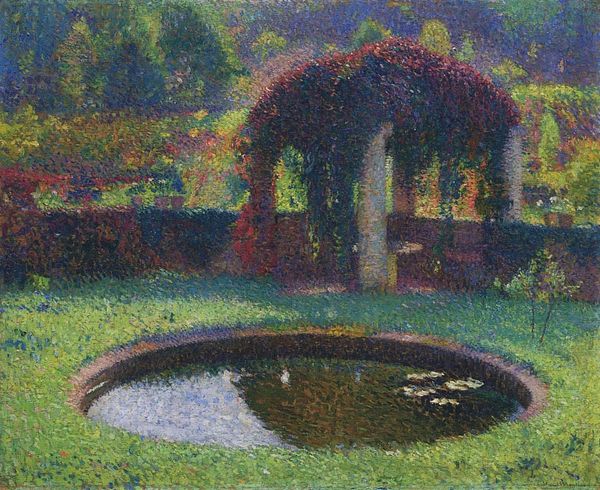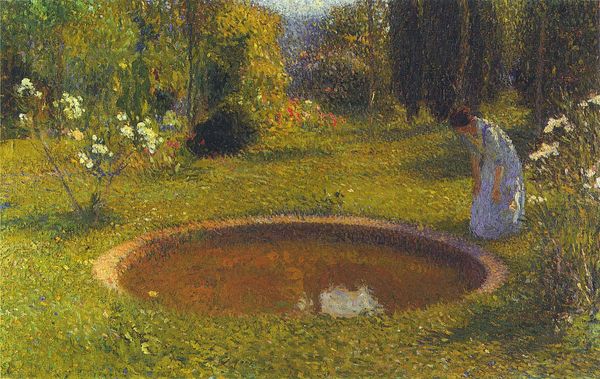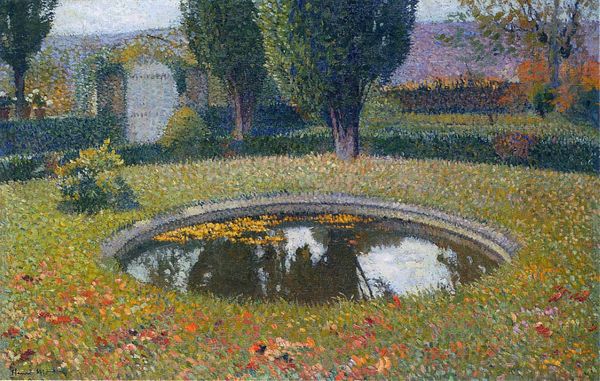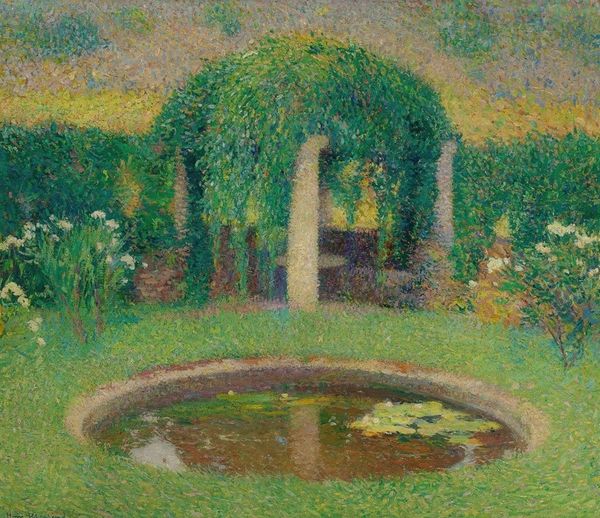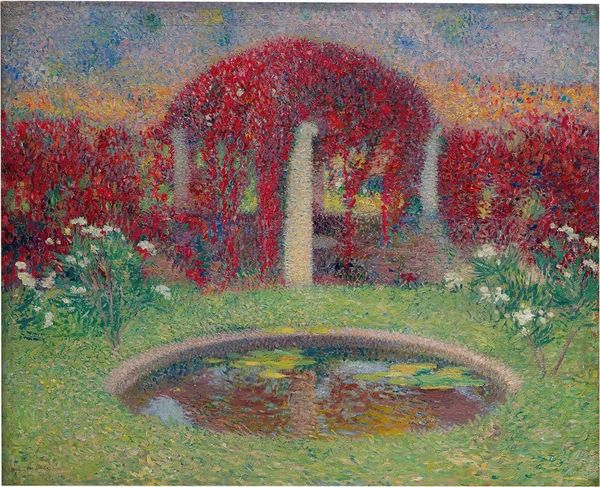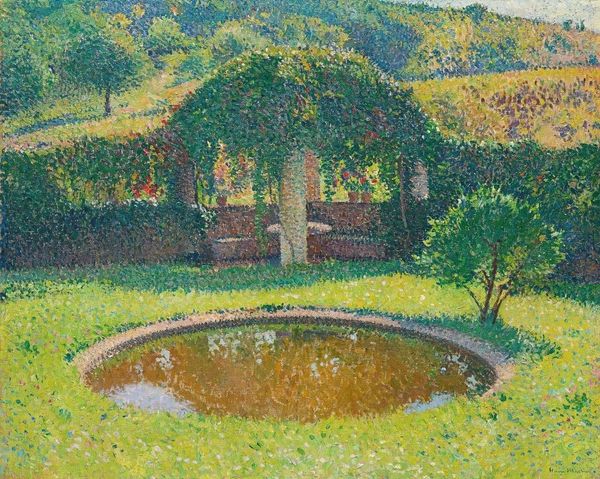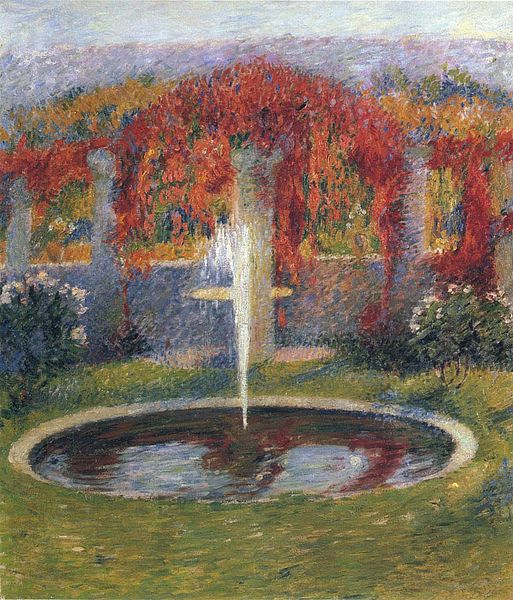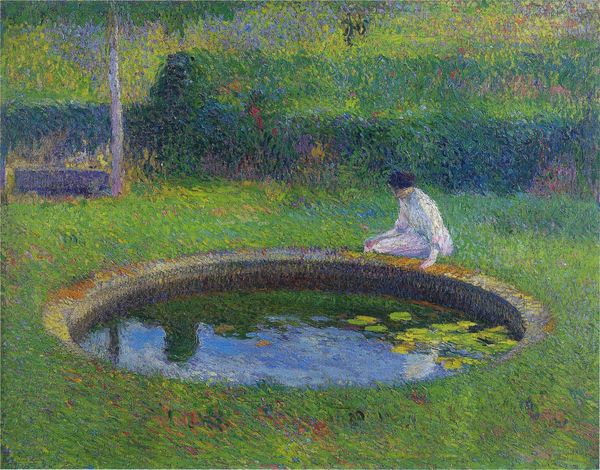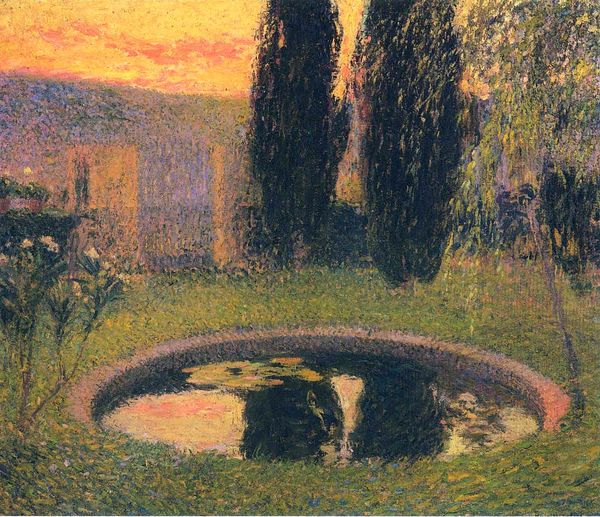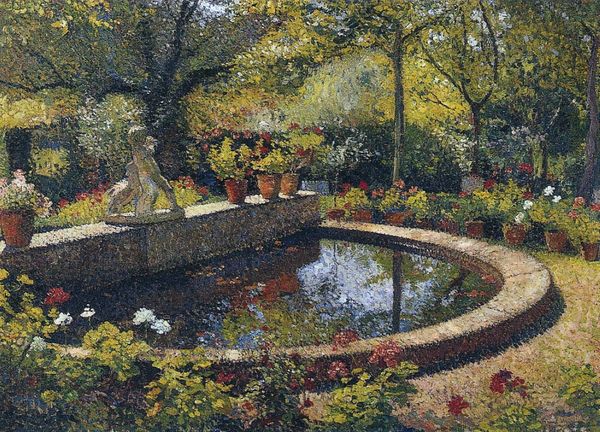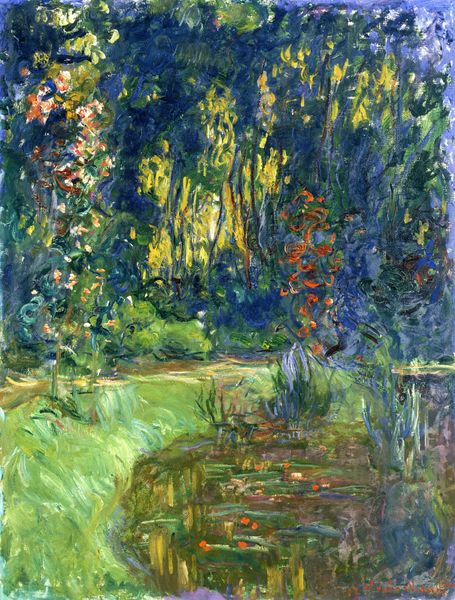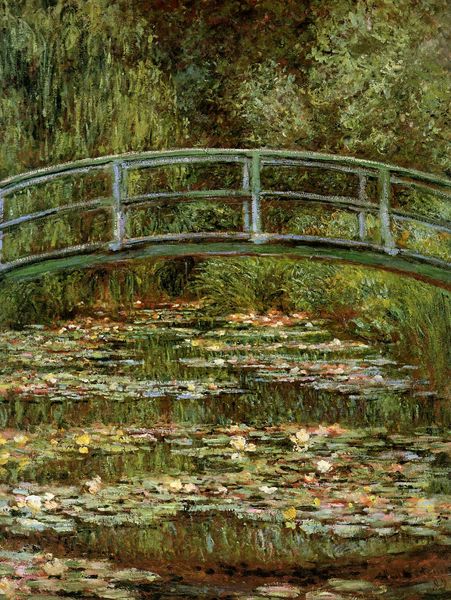
Dimensions: 68 x 100 cm
Copyright: Public domain
Curator: We're looking at "Marquayrol, Basin with Thujas," an oil painting from 1920 by Henri Martin. It's part of a private collection. Editor: Immediately, I'm struck by the vibrant, almost chaotic texture. The pointillist technique is quite aggressive here; it evokes a lively but almost frantic energy. Curator: Yes, Martin utilizes a divisionist approach, building up the image through individual strokes of color that merge in the viewer's eye. Note how the composition is structured around the horizontal axis of the basin, contrasting with the vertical thrust of the thujas. Editor: Precisely, but it’s the labor I’m drawn to—the sheer accumulation of gestures, the countless hours of applying paint to canvas. One can't ignore the materiality; look at how much pigment he must have used! Is there any record of Martin's working conditions or studio assistants who prepared his grounds or paints? Curator: Historical records suggest that Martin preferred working en plein air whenever possible, immersing himself directly in the landscape. Semiotically, the garden is far more than just representation—it’s an idealized space that conveys notions of tranquility, leisure, even cultivated artistry itself. Editor: Perhaps. But also, let’s consider who had access to such gardens and the leisure time to appreciate them? The art production is always tied to social stratification, and even pastoral landscapes such as these implicitly underscore socio-economic power structures. Curator: I understand your point, but focusing strictly on that limits our capacity to engage with other inherent artistic attributes. It creates a discourse predicated merely on art as an accessory for the elite. For instance, consider the manipulation of light within the composition, which gives the work an appealing ethereal quality. The basin and the trees surrounding it capture the light in distinct ways. Editor: True. Yet, light and shadow are material phenomena, governed by the specific properties of the pigments and the surface texture to the grounds on which they’re applied. These very materials themselves would be sourced, processed, traded, bought. The final effect may be "ethereal," but it is reached via concrete means of production. Curator: So, you’re urging to examine these works as cultural objects—reflections of labour and the raw resources extracted to render a picture like this on canvas. Editor: Precisely! Curator: This is a fascinating exchange and provides a compelling overview of this garden landscape. Editor: Indeed, there’s so much more we could consider within a Materialist analysis.
Comments
No comments
Be the first to comment and join the conversation on the ultimate creative platform.
